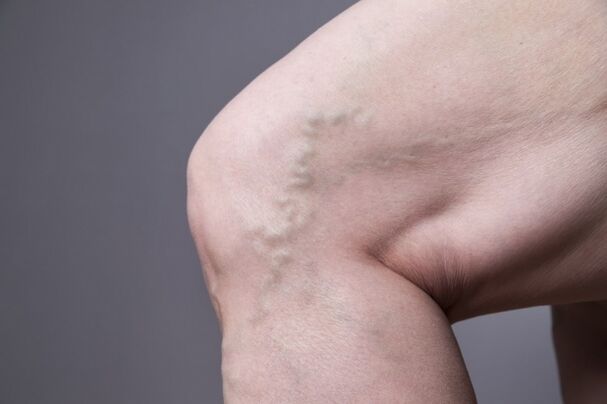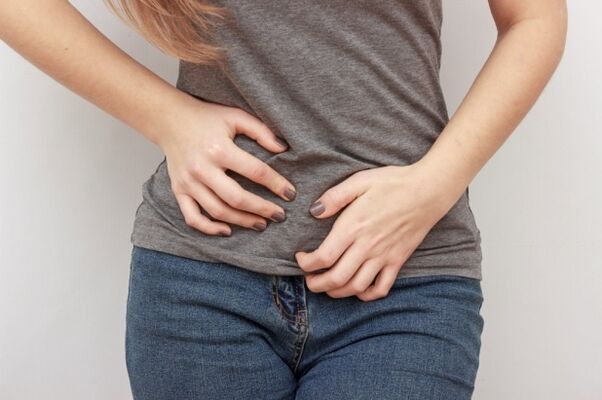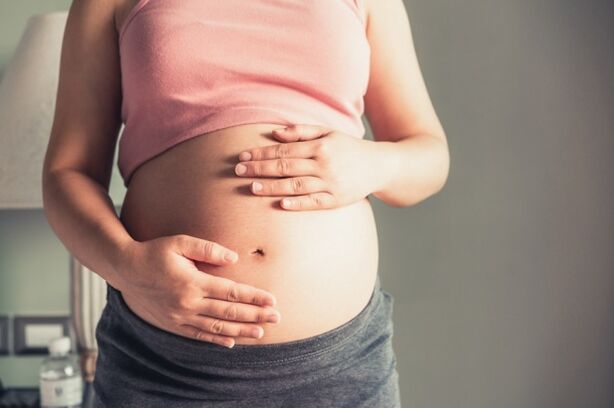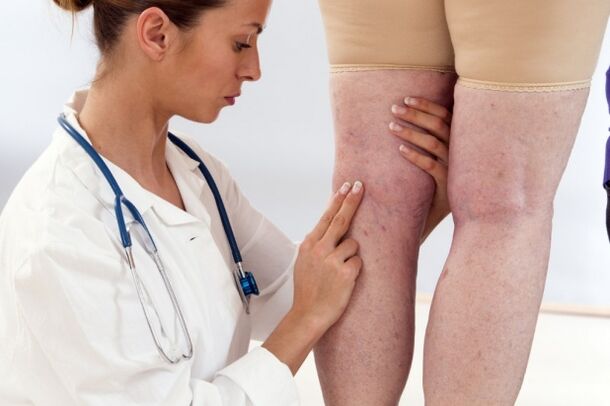Chronic veins and varicose veins are common diseases: According to statistics, each third person faces in developed countries.The special risk group includes representatives of fair sex, whose pathology brings both physical and psychological discomfort.In this article, we will consider why vascular diseases occur in women, what their signs and symptoms are, what to do to treat and prevent this disease.
Varicose veins: The cause of varicose veins in women
According to statistical data, men have less varicose veins than women with vascular disease that occurs more often than 1.5 times.What causes the gender characteristics of this pathology?

- The features of hormonal.In the monthly cycle, the female hormone foundation is subject to oscillation, and during pregnancy, childbirth, lactation and menopause, these changes even become more important.The ratio of female sex hormones (estrogen and progesterone) has a direct impact on the condition of blood vessels and blood viscosity.
- Hormone therapy.Combining the reception of combined contraceptives of hormone therapy and hormonal takes, thus causing a change in estrogen and progesterone ratio in the body.
- Wear shoes in heels and tight pants.Unknown shoes, narrow underwear and jeans - all this causes violations of blood flow in lower limbs and pelvis, leading to the development of varicose veins.
In addition, exclusive women, prerequisite for pathological development, varicose veins in women can stimulate the following factors:
- The trend of genetic determination.According to statistics, varicose veins are observed in 60% of cases if one of the parents suffered from this disease.
- Significant excess weight.Obesity is one of the factors in the appearance of varicose veins, since the lower limbs are subjected to increased pressure.
- Excessive load on the legs.If you are professionally engaged in running, jumping or strength training, favorable conditions are created for the development of problems with veins.
- The disruption of blood circulation is caused by a fixed posture.If you spend most of the time of sitting or standing, this is a serious prerequisite for the development of venous diseases.
- Nutrition is not stable.A diet, poor fiber, vitamins and trace elements, leading to disorders affecting blood vessels and blood composition.In addition, an unbalanced diet can cause constipation, which can also lead to changes in the veins - especially the varicose veins of the pelvic veins.
- Diseases of the endocrine and cardiovascular systems.Endocrine disorders provoke changes in the hormonal background, which, in turn, become a prerequisite for the development of varicose veins.Cardiovascular pathologies (especially hypertension) also cause the development of problems with the veins.

Intravenous veins of pelvic veins in women
The pathological expansion of pelvic vessels is a common problem, facing 15-25% of women of reproductive age.The disease is often confused with local infections and inflammation processes in the reproductive organs of the female genital system.Regarding the inappropriate diagnosis, inappropriate treatment is prescribed and the patient is not relief.Therefore, the problem of diagnosing and fully treating varicose veins of the pelvic veins is an urgent issue of phlebology and modern gynecology.
Blood supply to pelvic organs occurs due to uterine veins and ovaries, as well as veins-palace-palace plexus, bubble production, formidable, rectal plexus, etc.It is often caused by blood stagnation, may be caused by the following facilities:
- Sitting of life;
- gynecological diseases were previously transferred;
- Violation of hormones (special - high levels of estrogen);
- Pre -history of pregnancy and childbirth;
- The infringing violations and the connective tissue (namely a disadvantage of collagen).
The idea is a professional feature of this venous disease in women is the presence of chronic pelvic pain syndrome.It is represented by the pain in the lower abdomen, radiating the mu, sacrum and groin.
The pinnacle of pain often falls into the second half of the menstrual cycle, added by serious premenstrual syndrome and dysmenorrhea.Psychological disorders may participate in the mentioned symptoms.

As noted above, pathological diagnosis is difficult in that the symptoms of this disease of the veins in women can be misinterpreted as signs of purely dependent problems.Therefore, to make an accurate diagnosis, transvaginal ultrasound, Dopplerography, Phlebography, in some cases diagnostic endoscopy, will be required.
To treat varicose veins of small pelvic veins, both conservative and active methods are used.
In the first case, the purpose of the therapy is to increase the sound of the venous walls, normalize the nature of blood flow and blood viscosity.To solve these problems, patients are indicated as veins, conducting hirudes, ultrasound and magneticization, as well as exercises of exercise therapy.If the conservative therapy of this pelvic disease is not effective, the surgical intervention is performed - sclerosis or embolism with veins in pregnant women.
Problems with Vienna in pregnant women
Venous veins are the problem of most pregnant women.This is due to changes that occur in the body of the future mother during pregnancy.During this period, there was a complete restructuring of hormones, directly related to the state of the blood vessels.For example, the development of estrogen leads to changes in the structure of the muscle layer of the venous walls and the expansion of blood vessels.

In addition to the hormonal changes that accompanied by the baby's pregnancy and birth, pregnancy and childbirth can also cause the development of venous diseases in pregnant women and for other reasons.First of all, it is an increase in body weight and simultaneous growth in the lower limbs, as well as the excessive stress that the woman in labor experiences in contractions.
During pregnancy, the overall increase in blood volume is observed, occurring due to the development of plasma and red blood cells.
Venus in women: Symptoms and signs
Depending on the stage of development, varicose veins on the foot are manifested in different ways:
- The initial stage of the pathological process is easy to not pay attention, as its manifestations are usually minimal.Small blood vessels appear on their feet, in the evening there is a mild discomfort, at the end of the day may have a slight swelling.Even if the clinical picture is described does not cause much anxiety as soon as you have the symptoms of naming, you should consult your doctor.
- If the disease is not found in the initial stage and the treatment is not started on time, problems with veins in women will become worse.Venous mesh is becoming more pronounced, the typical nodes and cereals can clearly distinguish under the skin, swelling and the feeling of breaking in the lower limb causing serious discomfort.
- If the disease is not treated or treated ineffectively, it will go into a forgotten form.The veins are very prominent under the skin, constant edema, convulsions that occur at night, the skin in the leg area can change the color and covered with trophic ulcer.
Venus in women: Treatment
Two main approaches to solving this problem are distinguished: Conservative and Surgical.The first of them is often used at the early stages of the development of pathology, while the second is justified to combat later stages of the disease.

Conservative therapy includes drug use, use for external use, visiting physiotherapy, wearing compressed knit, adjusting physical efforts, daily habits, nutrition and alcohol diet.In addition, you can use additional tools to fight varicose veins - for example, Norman® foot cream.Its regular application in the lower limbs helps to get rid of swelling, fatigue, serious and discomfort in the legs, the disappearance of night seizures and reducing the expression of blood vessels.
Due to natural ingredients, the cream can be used during pregnancy.
Surgical intervention aims to remove all or part of varicose veins.Modern blood vessel surgery can provide the following types of activity:
- Combined phlebectomy.
- Laser blood clotting.
- Radiofrequency coagulation.
- Sclerosis.
If we are talking about the treatment of venous diseases in women aged 50-60 and in elderly patients, surgical interventions are often not done, because it is a stress for the body.

























